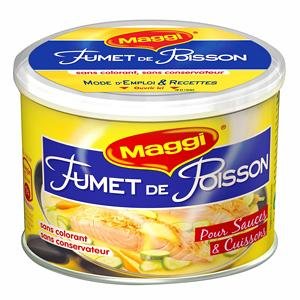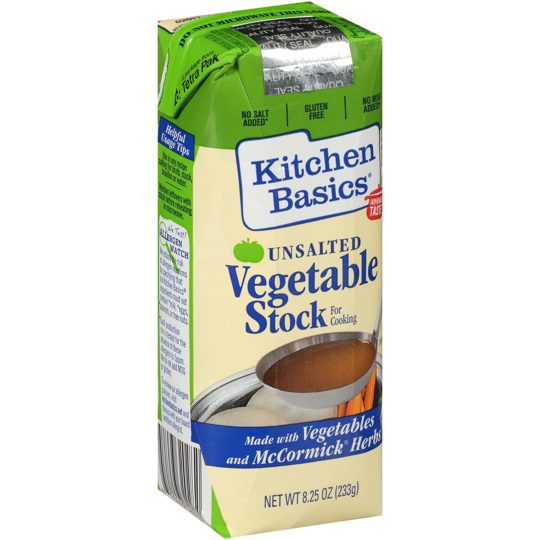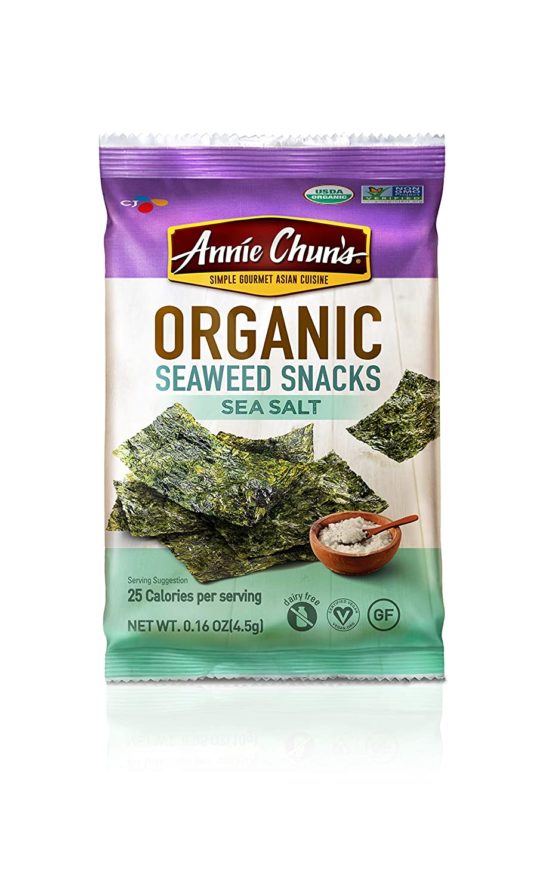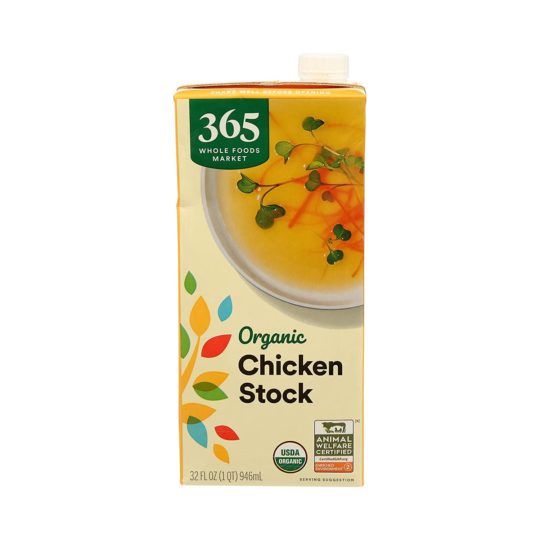When you need that infusion of seafood flavor in your dishes, seafood stock tends to pop up on the menu. This cooking ingredient is fluid yet tasty enough to support the base flavor of your dishes. And it’s as versatile as it is available for use, making it an impressive addition to many recipes. But specific reasons may force you to consider using something else in its place.
Luckily, many substitutes are available for replacing seafood stock. And these options vary, depending on your needs and preferences. They’re also easy to come by, so you may not need a detailed search for an alternative option. But let’s talk a bit about seafood stock and understand why it adds richness to your cooking.
What is seafood stock?
Stock is made by simmering vegetables and spices with certain foods. And in the case of seafood stock, the formula is quite broad. But in its basest form, the crucial ingredients are seafood parts, including shells, bones, scales, and even flakes. As such, the liquid exhibits a robust flavor that reminds you of the specific type of seafood used to make it.
You’ll find seafood stock in tons of forms. Of course, the most popularly referred to is fish stock, which is explicitly made from fish bones and parts. But in technical terms, seafood and fish are mainly segregated in culinary lingua. We can then say the main varieties of seafood stock include crab, shrimp or prawn, and shellfish stock.
Seafood stock in recipes
Seafood stock contributes a rich, savory flavor to any recipe. And it owes this factor to the hefty blend of vegetables and spices its mix. Plus, it offers a signature fishy flavor that reminds you of undersea recipes. And it also acts as a flavor base for tons of delicacies.
Some dishes add minor amounts of seafood stock to boost umami. And in others, it’s used to infuse a unique and alluring flavor to vegetables. You’ll also find it included in food drinks, where an exceptional taste is required. And it also works for side dishes and savory toppings, where it improves taste and adjusts thickness.
Typical delicacies where you’ll find seafood stock include;
- Marinades
- Soups
- Braises
- Stews
- Slow-cooked meals
- Sauces
- Etouffee
- Bouillabaisse
- Tuna spaghetti
- Salads
- Pasta
- Stir-frys
- Drunken shrimp
- Teriyaki salmon
- Casseroles
- Bisque
- Paella
- Cioppino
- Curries
- Chili
- Noodles
- Linguine
- Risotto
- Rice recipes
- Shrimp scampi
- Chowder
- Ravioli
- Seafood gumbo
Substitutes for seafood stock
You may not have this ingredient readily available in your vicinity, especially if the recipe demands a fresh one. And some people may have a shellfish allergy and can’t use seafood stock made with such. You may also have people on vegan diets at your table, meaning using this ingredient can be offensive. In all these situations, the following substitutes will conveniently replace it in your cooking.
Fumet

You can use this ingredient to replace seafood stock in your numerous recipes, and the reason is simple- fumet is another name for fish stock. That means you’ll get an equal dose of seafood flavor in your recipe with little compromise. Fumet works in everything that calls for seafood stock, including the tasteful bouillabaisse. And it can be added in equal amounts or adjusted to suit your preference.
You may notice the clear appearance of fumet, but it doesn’t mean the flavor isn’t potent. Also, when fat is added, gelatin may form in the recipe. But it’s not so bad, and if you don’t like it, you can skim it off.
Vegetable stock

If you’re not privy to the fishy flavor or live on a vegan diet, then this option is ideal for you. Vegetable stock will add as much umami and depth to your dishes as seafood stock would. Plus, since it contains similar ingredients from seafood stock, it’ll offer a semblance in flavor. The only notable difference, of course, would be the absence of a robust fishy taste.
Still, it works in everything, especially when you wish to omit the fish taste while keeping the flavor-rich. And the vegetable stock is much easier to find than seafood stock, so you get convenience from it.
Clam juice

Clam juice works perfectly as a substitute for seafood stock since it’s also derived from seafood. And though its flavor is slightly different, you’ll still get the feel of the ocean in your dish from its use. Clam juice can also be easily found in grocery stores and supermarkets to work in tight situations. And you’ll see them in bottled forms, making it easy to measure and store any excess left.
But clam juice needs to be tweaked to be closer to seafood stock in flavor. And you’ll need more of it as a substitute. To make a cup of seafood substitute, add two cups of clam juice into a pot with half a teaspoon of vegetable stock. Then, let the liquid simmer over low heat until a quarter of it has evaporated. And if you don’t have vegetable stock in liquid form, use half a vegetable bouillon cube instead.
Seaweed stock
 Another handy way to replace seafood stock in vegan dishes is with seaweed stock. Since it’s derived from seaweed, you’ll get a close ocean feel in the recipe. Plus, many vegans are already familiar with seaweed as a snack, so this option is welcome. And what’s more, you can make this stock to your preference as you’ll make it yourself from your favorite variety of seaweed- kelp, Wakame, or anything.
Another handy way to replace seafood stock in vegan dishes is with seaweed stock. Since it’s derived from seaweed, you’ll get a close ocean feel in the recipe. Plus, many vegans are already familiar with seaweed as a snack, so this option is welcome. And what’s more, you can make this stock to your preference as you’ll make it yourself from your favorite variety of seaweed- kelp, Wakame, or anything.
To make seaweed stock, boil any selected type of seaweed with onions, mushrooms, and water. The resulting liquid will be rich in umami and depth and works in all seafood stock recipes.
Chicken stock

Chicken stock is renowned for its versatility, which is why you can consider it as a substitute for seafood stock. It’s also easy to find or make from scratch, so you won’t have to stress yourself for it. And if you’re not bothered about its white meat source, it makes a fantastic replacement. Its flavor isn’t overwhelming, so it’ll add the needed umami and tastiness to the dish without taking over.
You can swap equal parts of chicken stock for seafood stock in your recipes. But note that it’ll be evident if the recipe needs the fishy taste of seafood stock explicitly. But it’ll work in many other situations, including casseroles, sandwiches, gumbo, bisque, and crab cakes.
Frequently asked questions (FAQs)
Is fish stock the same as seafood stock?
No. Fish stock is made from parts of fish only. But seafood stock includes parts of fish and other shellfish. Still, their flavors are pretty similar.
How Long does homemade seafood stock last?
If stored in air-tight containers, seafood stock can last up to four days in the fridge. In freezing conditions, however, they’ll keep for up to two months.
Can I use oyster sauce instead of seafood stock?
Yes, you can. Oyster sauce possesses a similar fishy flavor as seafood stock. Plus, many brands of the latter also contain it in their mix.
Conclusion
Adding seafood stock to your cooking is a sure way to impart a deep umami flavor and complexity. But not every situation can employ it in recipes, ergo the need for a replacement. So, with these substitutes, you’ll always have options to consider in place of seafood stock. And they’re convenient choices, so you never have to go through much to get them for your culinary needs.